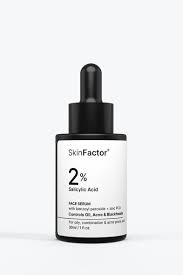Specialized Protection: High-Performance Coatings for Composites 🛡️
Composite materials—ranging from fiberglass and carbon fiber to advanced engineered plastics and structural laminates—are increasingly replacing traditional materials in high-demand industries like automotive, aerospace, marine, and construction. They are valued for their superior strength-to-weight ratio, corrosion resistance, and design flexibility. However, these non-traditional substrates present unique and significant finishing challenges that necessitate high-performance coatings for composites. Unlike porous wood or naturally structured metal, composites often have low surface energy, require specialized surface preparation and primer systems to achieve adequate adhesion, and demand a flexible topcoat that can withstand the material’s unique response to stress, UV light, and thermal cycling without failing.
The necessity for specialized coatings stems directly from the nature of the composite itself. Composites are formed by bonding two or more materials with different physical properties (e.g., glass fibers in a polymer matrix). This structure makes them prone to damage from environmental factors that affect the matrix material, such as UV-induced degradation of the polymer resin or moisture ingress through microscopic gaps, both of which can compromise the material’s structural integrity and aesthetics over time. Therefore, the coating system must serve not only as a decorative finish but as a sophisticated protective barrier. The coating must be elastic enough to tolerate the different coefficients of thermal expansion (CTE) between the polymer matrix of the composite and the coating film itself. This elasticity is vital in preventing cracking and delamination—common failure points, especially in exterior applications where the component is subject to rapid temperature changes and mechanical flexing.
The formulation of a high-performance coating for composites is thus a complex exercise in chemical bonding and flexibility management. Traditional coatings often fail because they lack the necessary adhesion to the smooth, low-energy composite surfaces. Specialized tie-coat primers are often the key, chemically engineered to create a strong, permanent bond by chemically or physically modifying the substrate’s surface energy, effectively bridging the gap for the high-performance topcoat (typically a durable, cross-linked polyurethane or epoxy). The final topcoat is then engineered to maximize UV resistance using advanced light stabilizers (like HALS), ensure superior gloss retention, and protect against chemical etching from fuels, solvents, and environmental pollutants. Choosing a provider of high-performance coatings for composites ensures the coating system is chemically tuned for the substrate, guaranteed to protect the material from its specific environmental threats, and provides the required aesthetic quality for demanding commercial and industrial applications.
One of the most critical aspects of these coatings is UV and weather resistance. Many composite materials, particularly those based on polyester or vinyl ester resins used in fiberglass, are highly susceptible to photodegradation when exposed to sunlight. This results in “chalking,” loss of gloss, and eventual surface erosion that exposes the underlying fibers, severely shortening the component’s lifespan. The topcoat must incorporate advanced, high-concentration UV absorbers and Hindered Amine Light Stabilizers (HALS) to effectively screen out harmful radiation and interrupt the chemical degradation process. This level of protective fortification is non-negotiable for composite components used in infrastructure, marine vessels, and exterior cladding.
Furthermore, the application process for composites often involves large, complex geometries (like wind turbine blades or vehicle bodies) that are frequently coated by robotic sprayers or high-volume automated systems. This requires the coatings to have finely tuned rheology to ensure they flow and level perfectly on vertical and contoured surfaces without sagging or running, while still achieving the necessary film thickness for full protection. The supplier’s expertise in adapting their chemical formulation to various application methods—and to the specific cure conditions (ambient cure, forced air, or UV cure) used by the OEM—is crucial for maximizing throughput and minimizing defects.
In conclusion, for manufacturers specializing in composite parts, the selection of the finishing system directly impacts the product’s lifespan, warranty, and safety certifications. A reliance on commodity coatings is not feasible due to the inherent risks of adhesion failure and material degradation unique to composite substrates. The market demands an engineered approach from an Authoritative supplier who offers deep Expertise in polymer chemistry, specifically in areas like surface energy management and flexible cross-linking. The strategic deployment of a customized, high-performance coating system ensures that the composite component is not only visually superior but also structurally protected for its full service life, securing its competitive advantage in the global market.






